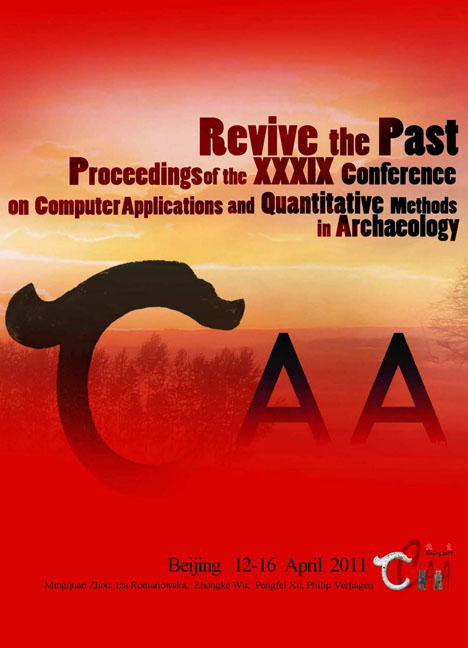 Revive the Past
Revive the Past Rhizome of Western Han: an Omnispatial Theatre for Archaeology
Published online by Cambridge University Press: 23 June 2021
Summary
Abstract:
This paper investigates the integration of archaeological laser scan data inside the world's first 360-degree stereoscopic virtual environment (Advanced Visualization and Interaction Environment - AVIE). This interactive display system allows for fully embodied, omnispatial, omnidirectional and 3D visualization. Rhizome of the Western Han represents a process of archaeological re-contextualization, bringing together remote sensing data from the two tombs (M27 & M1) with laser scans of funerary objects, in a spatial context. The study of Han Dynasties (206 BC-220 AD) imperial tombs has always been an important field of Chinese archaeology. However, only a few tombs of the Western Han Dynasty have been scientifically surveyed and reconstructed. The prototype builds an interactive narrative based on spatial dynamics and cultural aesthetics that are embedded in the archaeological remains. This paper documents the principles of post-processual archaeological (embodiment, re-combinatory narratives, theatre) as they pertain to immersive display architectures. The discussion looks for a re-visioning of digital cultural heritage dialogues based on the concepts of cyberarchaeology, cybermapping and the rhizome. In addition, the technical implementation of the Rhizome of the Western Han inside AVIE is described. The work was undertaken in 2010 at the Applied Laboratory for Interactive Visualization and Embodiment (ALiVE), City University, Hong Kong.
Keywords: Phenomenology, Immersive Systems, 3D, Western Han, Cyberarchaeology
Introduction
The opportunities offered by interactive and 3D technologies for enhanced cognitive exploration and interrogation of high dimensional data still need to be realized within the domain of interpretive archaeology and digital cultural heritage. Most visualization research remains constrained to 2D small-screen based analysis. Furthermore, the number of pixels available to the user remains a critical limiting factor in human cognition of data visualizations (Kasik et al. 2009). This recognition is demonstrated through an increasing trend towards research requiring ‘unlimited’ screen resolution (one could also say screen ‘real estate’). This has resulted in the recent growth of gigapixel displays with potential for humanities and archaeological research (e.g. Powerwall, HIPerspace CALIT2, Manovich 2009), next generation CAVE systems (e.g. StarCave; see Levy et al. 2010), 360-degree 3D panoramic spaces (e.g. Advanced Visualization and Interaction Environment, Kenderdine 2010a) and platforms such as the Allosphere (UC, Santa Barbara).
- Type
- Chapter
- Information
- Revive the PastProceedings of the 39th Conference of Computer Applications and Quantitative Methods in Archaeology, pp. 141 - 158Publisher: Amsterdam University PressPrint publication year: 2012


